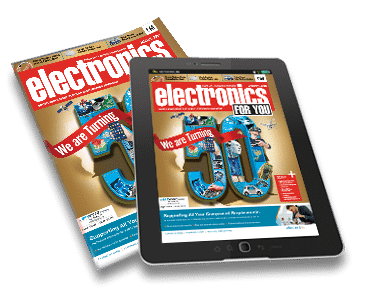Raspberry Pi, the British company renowned for its line of single-board computers, has revolutionized the world of electronics, particularly in education, hobbyist, and industrial sectors. Since its inception, Raspberry Pi has been a game-changer, empowering educators, hobbyists, and professionals to explore the realms of computing, robotics, Internet of Things (IoT), and more. As a testimony to its influence and success, the entire range of Raspberry Pi products has now been officially added to the TME catalogue, expanding the accessibility of these powerful tools to a broader audience.
Raspberry Pi’s Global Impact
Raspberry Pi’s contribution to the global electronics market is unparalleled. Originally designed to promote computer science education, the Raspberry Pi quickly became a favorite among hobbyists, students, and professionals. The single-board computers are versatile, cost-effective, and highly customizable, making them ideal for a wide array of applications. From teaching basic coding skills to creating complex industrial automation systems, Raspberry Pi has proven to be an indispensable tool in modern electronics. Its global recognition and widespread use are evident as Raspberry Pi devices are now central to numerous professional and educational projects.
The Full Raspberry Pi Product Range in TME’s Catalogue
The inclusion of Raspberry Pi products in the TME catalogue means that customers now have easier access to a comprehensive range of products that extend far beyond the company’s core family of single-board computers. TME’s catalogue not only features the classic Raspberry Pi models but also includes a variety of peripherals, accessories, and specialized solutions that enhance the functionality and adaptability of Raspberry Pi systems.

Core Raspberry Pi Computers
At the heart of the Raspberry Pi product line are the single-board computers, which have become the company’s flagship products. These computers are designed for both amateur and professional applications, ranging from IoT devices to multimedia centers, robotics, and industrial machinery controllers. With the recent launch of the Raspberry Pi 5, users now have access to even more powerful computing capabilities. The Raspberry Pi 5 is equipped with a dual-core, 64-bit Broadcom BCM2712 system-on-chip, based on the Arm Cortex-A76 architecture, and is clocked at 2.4 GHz. This powerful system is complemented by up to 8 GB of RAM and a GPU that supports OpenGL and Vulkan technologies. The latest model also introduces new features such as a PCIe bus connector for expansions, a power switch circuit, and an RTC clock system on the PCB.

Raspberry Pi 400
Building on the success of its core single-board computers, Raspberry Pi also offers the Raspberry Pi 400—a computer integrated into a keyboard, reminiscent of the classic microcomputers of the 1970s and 80s. The Raspberry Pi 400 is essentially a repackaged Raspberry Pi 4, making it more practical and accessible, especially for younger users and those new to computing. It comes as a complete set that includes a mouse, power supply, pre-installed operating system, and a detailed user manual, making it an ideal starting point for anyone looking to dive into the world of Raspberry Pi.
Raspberry Pi Zero
For projects that require a smaller, more energy-efficient solution, the Raspberry Pi Zero family offers an excellent alternative. These miniature boards, with dimensions of just 65 x 30 mm, are perfect for mobile devices, remote sensors, and small IoT equipment. Despite their size, the Raspberry Pi Zero models pack a punch, supporting multimedia applications, game consoles, and even complex robotics projects. The Zero models are available in variants with or without built-in wireless communication modules, providing flexibility depending on the needs of the project.
Compute Modules
Recognizing that even the compact form of the Raspberry Pi single-board computers might be too large for some applications, Raspberry Pi introduced the Compute Module format. These modules strip away all non-essential components, leaving just the core computing power in a much smaller form factor. Compute Modules are ideal for industrial and embedded applications where space is at a premium. They come with a high-density connector that offers extensive access to the processor’s capabilities, making them a versatile option for custom hardware designs.

RP2040 Microcontroller and Raspberry Pi Pico
In addition to its single-board computers, Raspberry Pi also ventured into the microcontroller market with the introduction of the RP2040 chip and the Raspberry Pi Pico board. The RP2040 is a microcontroller based on the Cortex M0+ architecture, offering a low-cost, low-power option for simple projects. The Raspberry Pi Pico board, which houses the RP2040, is designed to be easy to use, with features that make it ideal for beginners and professionals alike. It supports MicroPython and C/C++ programming, making it a versatile tool for various applications, from simple automation to complex embedded systems.
Extension Modules and HATs
One of the most significant advantages of the Raspberry Pi ecosystem is the extensive range of extension modules, commonly known as HATs (Hardware Attached on Top). These modules enhance the functionality of the Raspberry Pi by adding features such as digital television tuners, sound cards, and even controllers for LEGO® robotics. The GPIO pinout of Raspberry Pi boards remains consistent across different models, ensuring compatibility with most HATs. This consistency allows users to upgrade their Raspberry Pi without worrying about losing the functionality provided by their HATs.
Original Accessories
The popularity of Raspberry Pi has led to the development of a wide array of accessories, many of which are now available through TME. These accessories include power supply modules, enclosures, keyboards, mice, and displays—all designed to complement and enhance the Raspberry Pi experience. The official Raspberry Pi Touch Display, for example, is a 7-inch touchscreen that connects directly to the Raspberry Pi via the DSI connector, offering a seamless interface for building integrated devices.
Cameras and Lenses
Raspberry Pi also offers a range of camera modules compatible with its computers. These cameras, connected via the CSI (Camera Serial Interface) connector, are available in various formats and resolutions, from compact units for simple projects to advanced models with high-resolution sensors and infrared capabilities. The cameras are ideal for a wide range of applications, including robotics, security systems, and even creative projects like time-lapse photography.
Conclusion
The official inclusion of Raspberry Pi products in the TME catalogue is a significant development for both companies and for the global Raspberry Pi community whether you’re an educator, hobbyist, or professional, the expanded availability of Raspberry Pi products through TME opens up a world of possibilities, making it easier than ever to bring your ideas to life.
Text prepared by Transfer Multisort Elektronik Sp. z o.o












